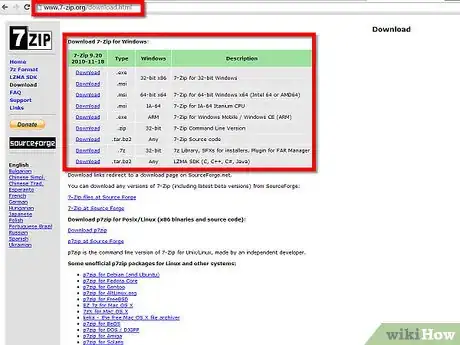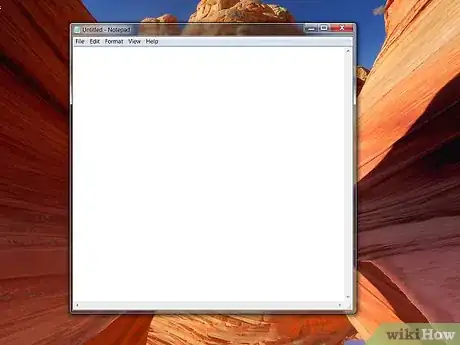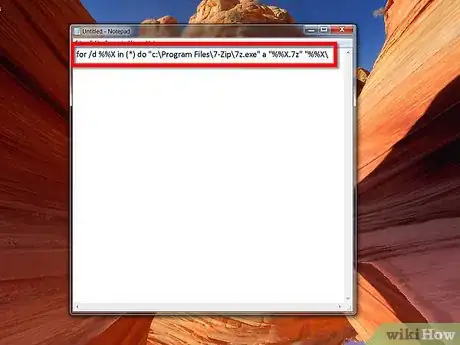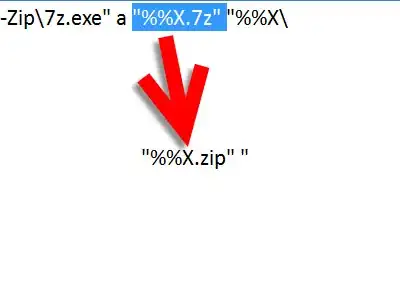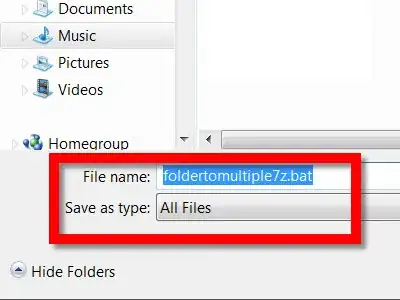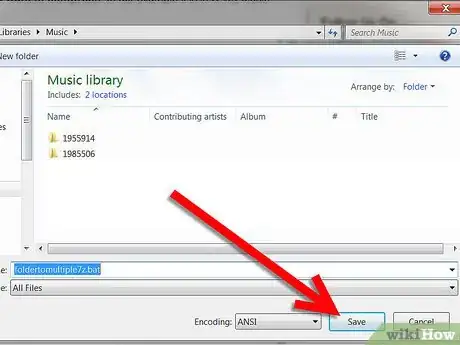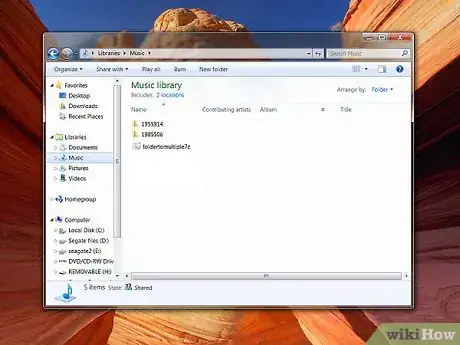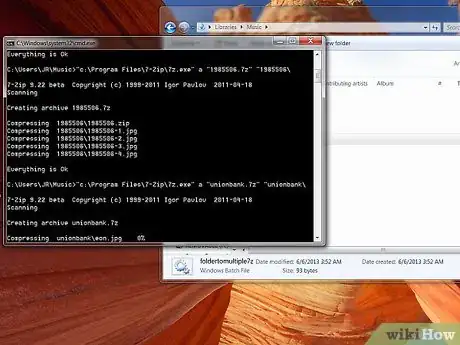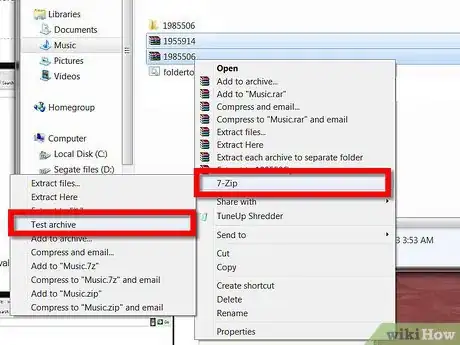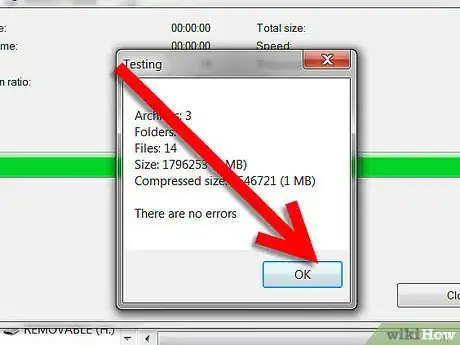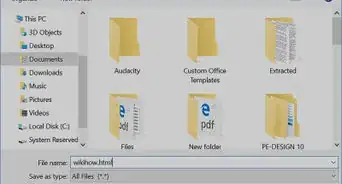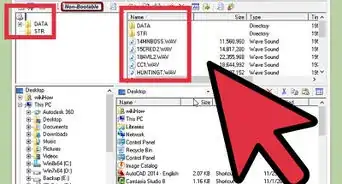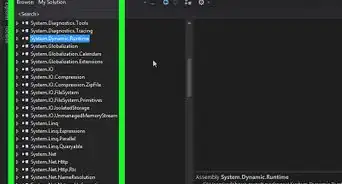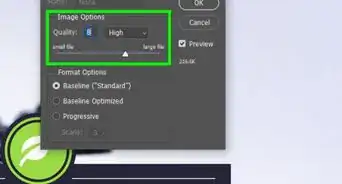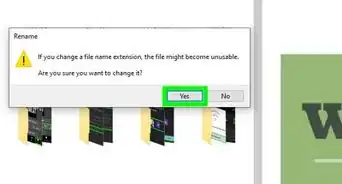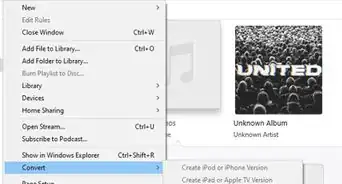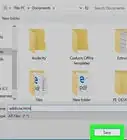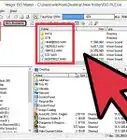Quick tutorial on using 7-Zip to create compressed folders
X
wikiHow is a “wiki,” similar to Wikipedia, which means that many of our articles are co-written by multiple authors. To create this article, 12 people, some anonymous, worked to edit and improve it over time.
This article has been viewed 316,365 times.
Learn more...
This wikiHow article will show you how to use the free software 7-Zip to create multiple compressed folders in one go. This may come in handy for times when you are backing up your computer files or for whenever you need to compress a lot of file folders in general. This method involves using 7-Zip in a Windows batch file.
Steps
-
1Install 7-Zip. If you let it install using the default settings, it should typically be in "C:\Program Files\7-zip\7z.exe."
- For this tutorial, let's say that you have some folders from your music collection that you want to compress so you can back them up on an external hard drive. These folders are contained inside a 'larger' folder named 'My Music.'
-
2Open the Notepad app. You won't need to use 7-Zip's graphical user interface, so no need to run it after installing.Advertisement
-
3In Notepad, insert this single line of code:
for /d %%X in (*) do "c:\Program Files\7-Zip\7z.exe" a "%%X.7z" "%%X\" -
4
-
5
-
6Browse to the location of the folders you want to compress. In our example it is in C:\My Music.
-
7
-
8Click Save.
-
9Close Notepad and navigate to your 'My Music' folder. Notice that the batch file is at the same directory level as the folders that need to be compressed.
-
10Run the batch file by double-clicking on your bat file within your 'My Music' folder. DO NOT run as Administrator (option appears in right-click menu) - running as Administrator will compress the files in windows/system32. After you double-click on the bat file, the windows command prompt appears and 7-Zip begins to do its thing.
- The windows command prompt disappears when all compressed folders are created. You should now see them inside your folder.
-
11Verify the validity of your compressed folders. To do this, highlight them all and click the right mouse button. If you installed 7-Zip in its default setting, you'll have its menu incorporated in the Windows shell. Navigate to it and click 'Test Archive.'
- 7-Zip should report that there are no errors in your archive.
- You are done creating multiple compressed folders in one go using 7-Zip. You can now move them to the external hard drive. You can delete the batch file you created or move it to a different folder.
Advertisement
Community Q&A
-
QuestionHow can I zip only certain file types (e.g. PDF) across multiple folders/sub-folders?
 Community AnswerCreate a bat file with the following command (replace pdf with desired extension): FOR %%i IN (*.pdf*) DO "c:\Program Files\7-Zip\7z.exe" a "%%~ni.zip" "%%i".
Community AnswerCreate a bat file with the following command (replace pdf with desired extension): FOR %%i IN (*.pdf*) DO "c:\Program Files\7-Zip\7z.exe" a "%%~ni.zip" "%%i". -
QuestionWhat if the folder names have spaces?
 Community AnswerSpaces in the folder names did not cause any issues for me. Test it out on a few practice folders and you should be able to tell if there are any issues.
Community AnswerSpaces in the folder names did not cause any issues for me. Test it out on a few practice folders and you should be able to tell if there are any issues. -
QuestionCan a bunch of files be password-protected using a batch file?
 Community AnswerYes; after the command, add the -p switch and then the password with no spaces between (i.e. "-ppassword"). Add -mhe on the end of that to encrypt the headers, which that means that whoever opens the zipped archive will have to provide a password to view its contents.
Community AnswerYes; after the command, add the -p switch and then the password with no spaces between (i.e. "-ppassword"). Add -mhe on the end of that to encrypt the headers, which that means that whoever opens the zipped archive will have to provide a password to view its contents.
Advertisement
Things You'll Need
- A computer with the Windows operating system.
- 7-Zip, which you can download from here.
- A text editor for creating the batch file, Windows Notepad is enough.
About This Article
Advertisement
